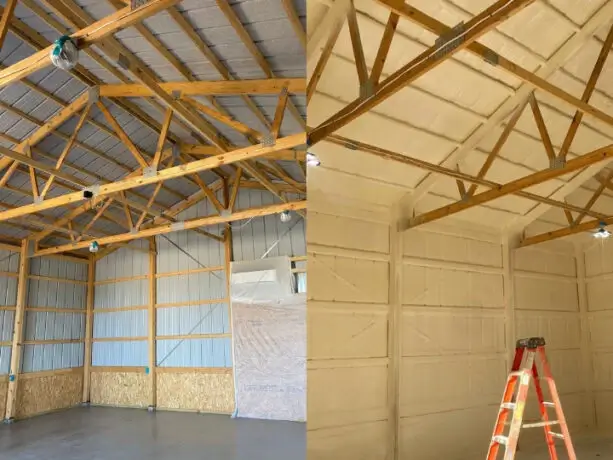Foam is a composite material formed when the two chemicals, isocyanate and polyol resin, meet. Spray Foam insulation never loses its shape and is known to fill cracks or gaps as it won’t compress or settle over time. It is a polymer made of a thermally insulating foam that creates the thermal barrier surrounding the component or between the interior space.
Spray Foam uses all three heat transfers: convective, radiant, and conductive heat transfer giving it a high R-Value. When spray foam is first applied, it quickly begins to expand. Its liquid volume can increase to 30-60 times to what it initially began as.
There are two types of insulation that could be used, Open and Closed Cell. Below, are the differences between the two cell insulations:







Spray Foam Insulation may be used for residential, commercial and industrial properties. They can be applied to:
To seal cracks anywhere in a house
Used for external and interior walls, attics, floors, and ceiling cavities.
Spaces surrounding electrical outlets and light fixtures, and near window and door frames
R-value is determined by a grading system used to check the Insulation’s effectiveness. The higher the R-Value, the more insulated the material is. Depending on the location of the foam insulation, it could require a different layer of insulation material. The R-values read below:
Open Cell: The R Value would typically be 3.5 to 3.6 per inch, so a total of around R-13 in a 2×4 wall, or R-19 in a 2×6 wall.
Closed Cell: It expands around one inch creating an R-Value up to R-6.5.